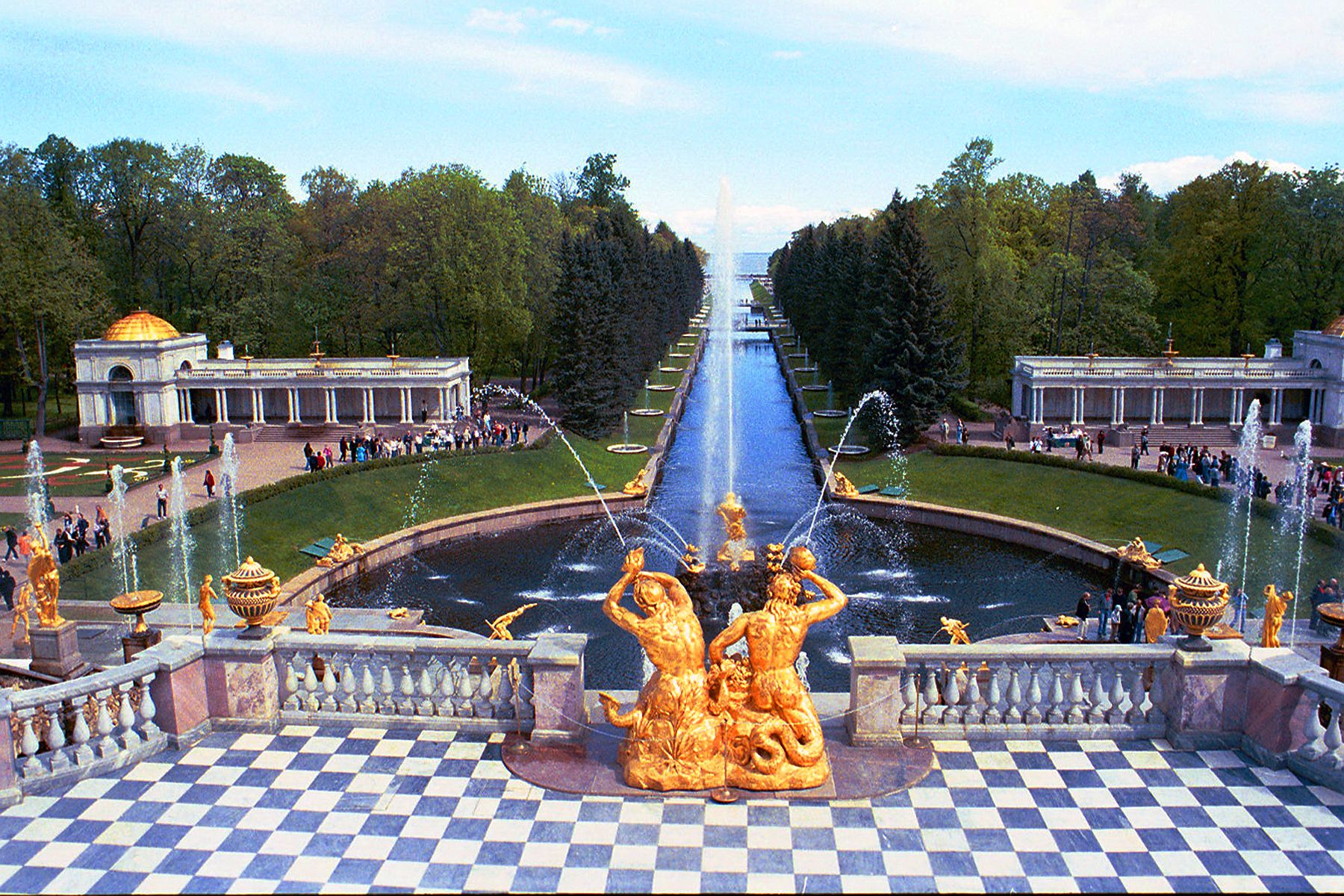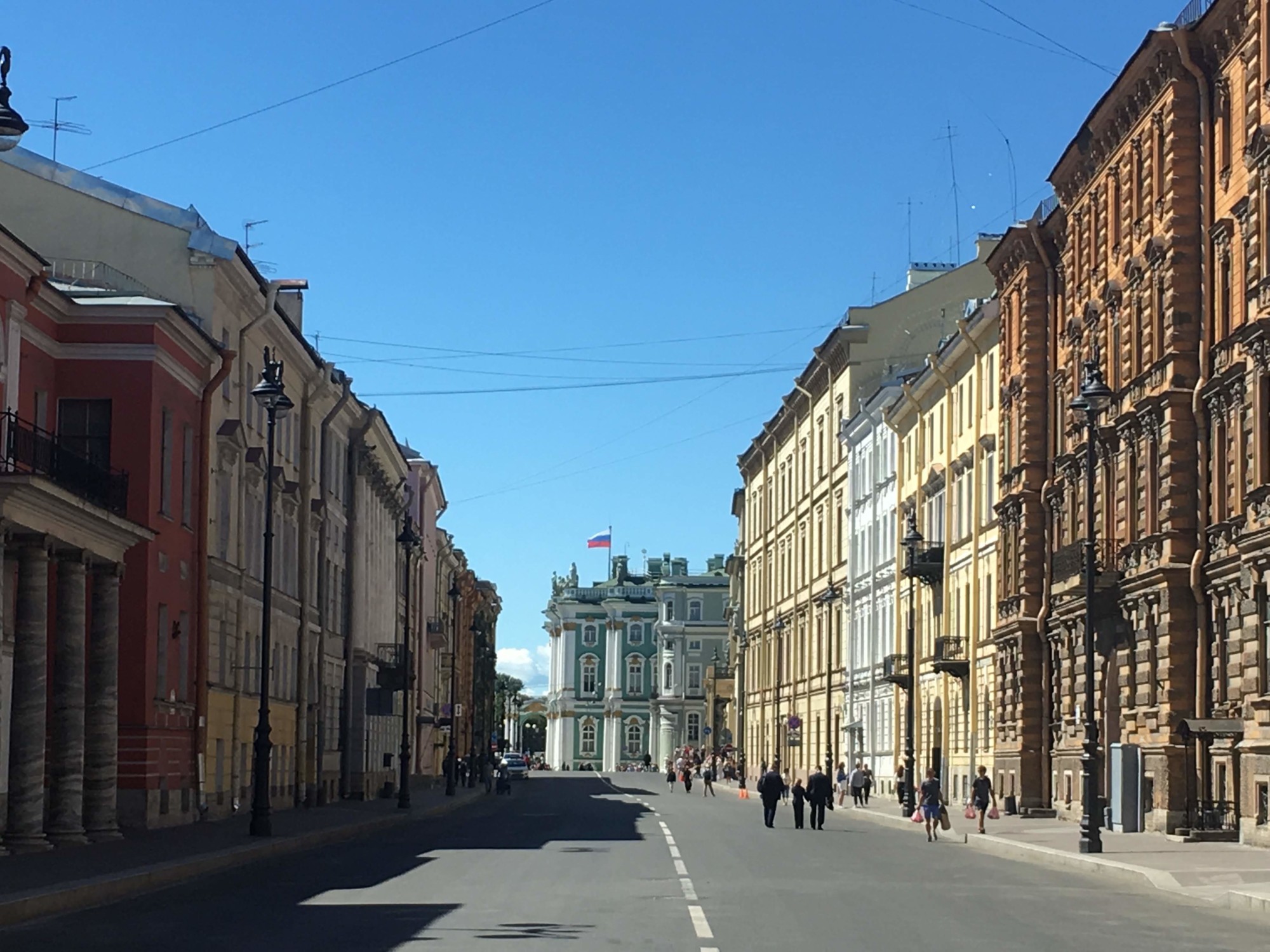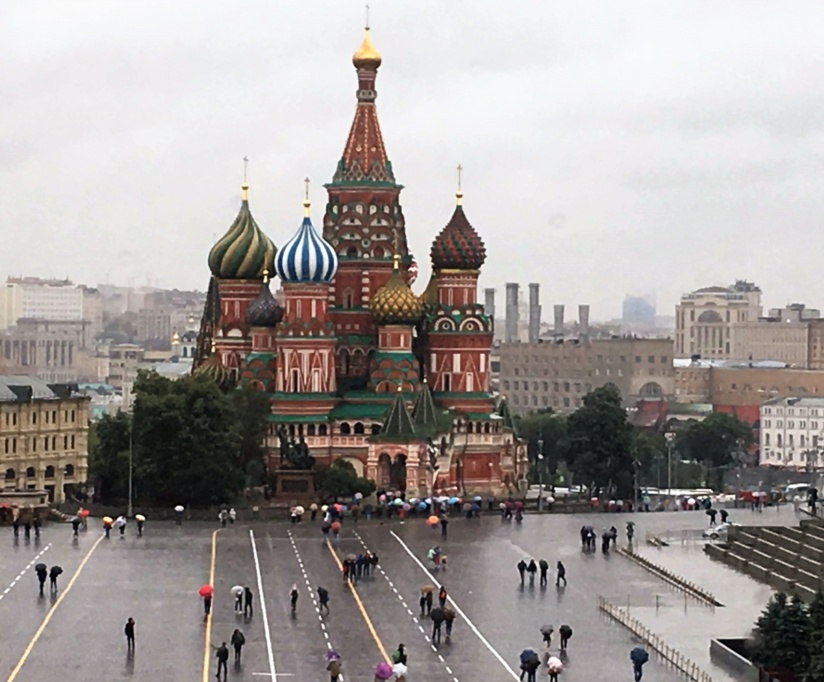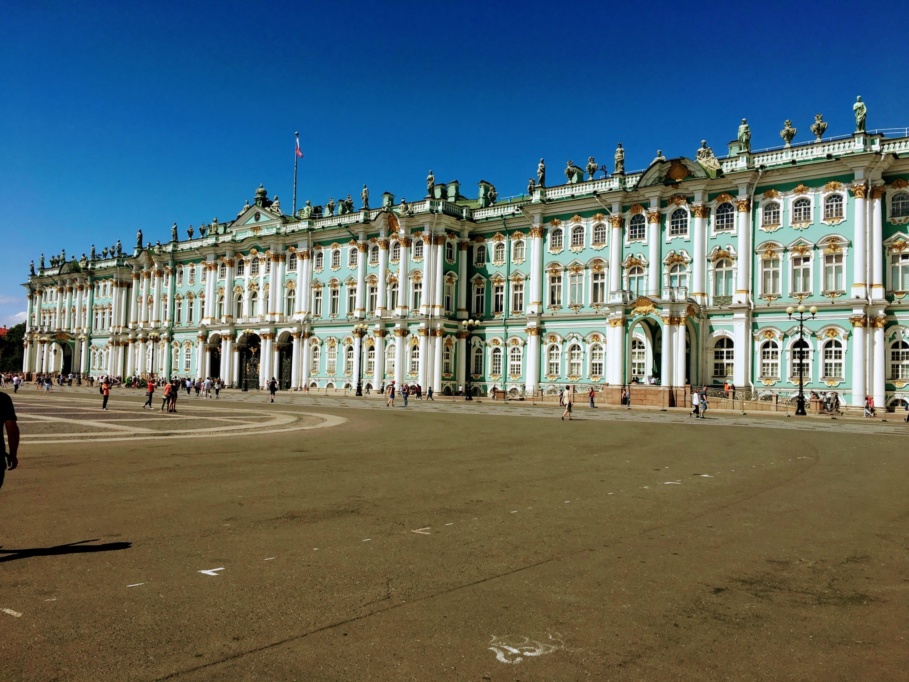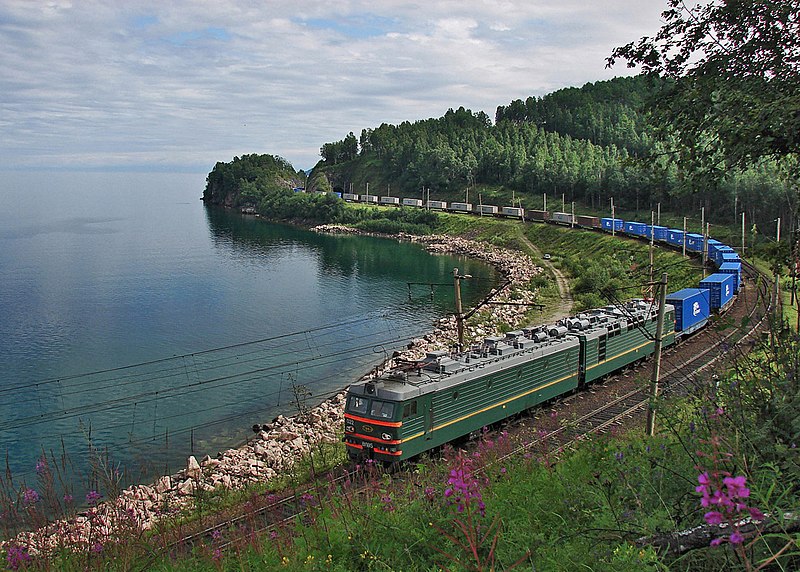St Petersburg Russia Travel Guide A Vagabond Life
Visiting St. Petersburg, Russia is like stepping into a living museum of art, culture, and history. Founded by Tsar Peter the Great in 1703, this stunning city on the Neva River has played a pivotal role in Russia’s history. Its grand architecture, elegant canals, and opulent palaces reflect the ambition of its founder, who sought to establish a “window to Europe” for Russia. The historic center of St. Petersburg, a UNESCO World Heritage Site, is a testament to this vision, with landmarks like the Winter Palace, the Hermitage Museum, and the Church of the Savior on Spilled Blood, all showcasing the city’s rich cultural heritage.
St. Petersburg, often referred to as the “Venice of the North,” offers a unique blend of European and Russian influences. Visitors can explore the iconic Hermitage Museum, one of the world’s largest and most prestigious art museums, housing a vast collection of art and cultural artifacts. The city is also known for its vibrant arts scene, with ballet, opera, and classical music performances taking place in splendid venues like the Mariinsky Theatre. Whether you’re strolling along the elegant Nevsky Prospect, cruising the picturesque canals, or immersing yourself in the city’s cultural offerings, St. Petersburg promises a captivating and unforgettable travel experience steeped in history and artistic splendor.
St Petersburg Russia Map
Getting To St Petersburg Russia
By Air
Pulkovo Airport (LED) is the primary international gateway to St. Petersburg, with connections to major cities across Europe, Asia, and the Middle East. It serves both domestic and international flights. Travelers from the EU and USA may face additional scrutiny due to sanctions and travel restrictions, so it’s advisable to check current entry requirements and visa regulations before booking.
By Train
The city is well-connected by rail, with services from Moscow and other Russian cities. The high-speed Sapsan train offers a quick and comfortable journey from Moscow to St. Petersburg, taking around 4 hours. International trains from European cities also arrive at the city’s main railway station, Moskovsky Station.
By Car
Driving to St. Petersburg from neighboring countries is possible, but travelers should be aware of visa requirements and the need for vehicle permits. For those coming from the EU, crossing borders can involve additional paperwork and checks due to sanctions and geopolitical tensions.
By Bus
Long-distance buses from various Russian and European cities arrive at St. Petersburg’s main bus terminals. This option is generally less expensive but can be less comfortable compared to trains or flights.
Getting Around St Petersburg Russia
Public Transport
St. Petersburg boasts an extensive and efficient public transport system, including buses, trolleys, trams, and the metro. The metro system is particularly user-friendly, with stations located near major attractions and a comprehensive map available in English. Transport cards and single-ride tickets can be purchased at metro stations.
Taxis and Ride-Sharing
Taxis are widely available and can be hailed on the street or booked via phone. Ride-sharing apps like Yandex.Taxi and Uber operate in St. Petersburg, providing convenient and often cheaper alternatives to traditional taxis. Be cautious of potential language barriers and ensure your driver is licensed.
Bicycles and Walking
The city’s historic center is relatively compact and walkable, making it easy to explore on foot. Bicycle rentals are available, and dedicated bike lanes are becoming more common, though traffic can be challenging in some areas.
Navigating Sanctions and Travel Restrictions:
Travelers from the EU and USA should be aware of the ongoing geopolitical situation and related sanctions, which may affect travel plans. Restrictions and sanctions can impact financial transactions, including the use of international credit cards, and may affect transportation and accommodation options. It’s advisable to carry cash and confirm payment methods with service providers in advance. Additionally, travelers should stay informed about any travel advisories issued by their home countries and follow local regulations to ensure a smooth and safe visit.
By preparing for these considerations and utilizing the city’s efficient transport network, you can navigate St. Petersburg comfortably and enjoy its rich cultural and historical offerings.
Things To See & Do In St Petersburg Russia
The State Hermitage Museum St Petersburg Russia
The Hermitage Museum, located in the heart of St. Petersburg, Russia, is one of the world’s most renowned and iconic cultural institutions. Founded in 1764 by Empress Catherine the Great, the Hermitage boasts a rich history and an unparalleled collection of art and historical treasures. What began as a private collection of the empress has evolved into a vast complex of six historic buildings, including the Winter Palace, which served as the official residence of Russian monarchs. The Hermitage’s striking architecture, featuring opulent palaces and ornate halls, is an integral part of its allure.
One of the Hermitage’s most impressive features is its art collection, which spans diverse eras and includes over three million items. It houses an exceptional collection of European art, including works by Leonardo da Vinci, Rembrandt, Michelangelo, and Raphael. The museum’s vast collection of Russian art, from ancient icons to 20th-century masterpieces, provides a comprehensive view of the country’s artistic heritage. Additionally, the Hermitage is renowned for its exquisite decorative arts, ancient artifacts, and an exceptional array of jewelry and gemstones. The Winter Palace, with its opulent interiors, is itself a highlight exhibit, offering a glimpse into the lavish lifestyle of Russian royalty. A visit to the Hermitage Museum is a journey through time and art, an exploration of human creativity, and an immersion into the opulence of Russia’s imperial history.
Tickets: Buy tickets on line here Hermitage Tickets
You can purchase 1 day (US$17.95) per adult or 2 day tickets ($US23.95). Both these tickets get you special access through a separate entrance from Millionnaya Street through Shuvalovsky Passage. When we went we did not have to queue at all.
I recommend to buy the 2 day pass which gives you access to more and allows you time to look at everything at a bit more of a leisurely pace.
Tickets can either be printed or saved to an electronic device.
Address: Palace Square, 2, St Petersburg
Open: 10.30AM – 6PM Tuesday to Sunday. Closed Monday
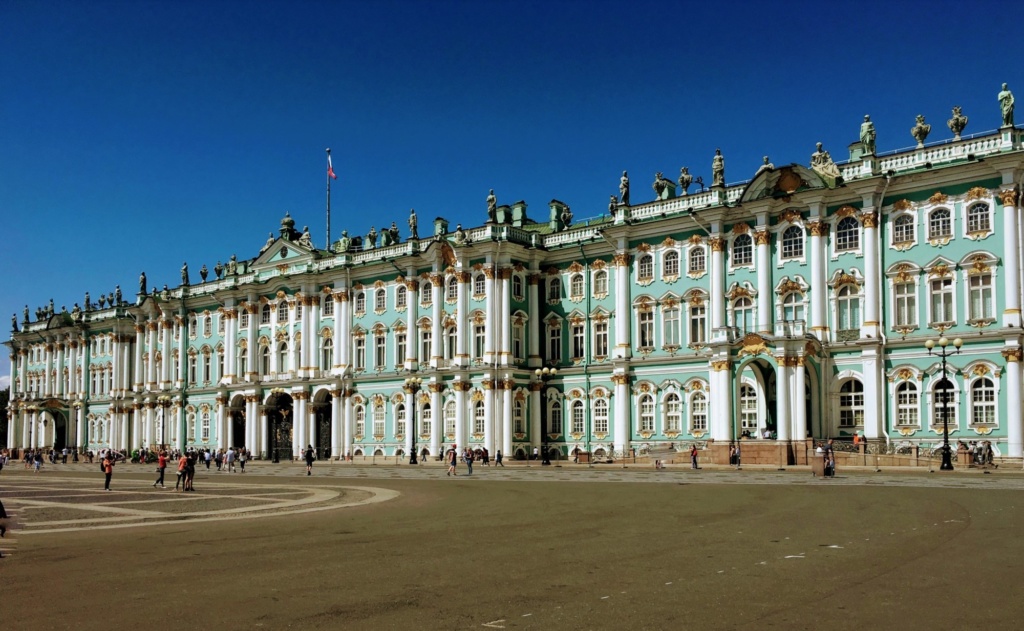
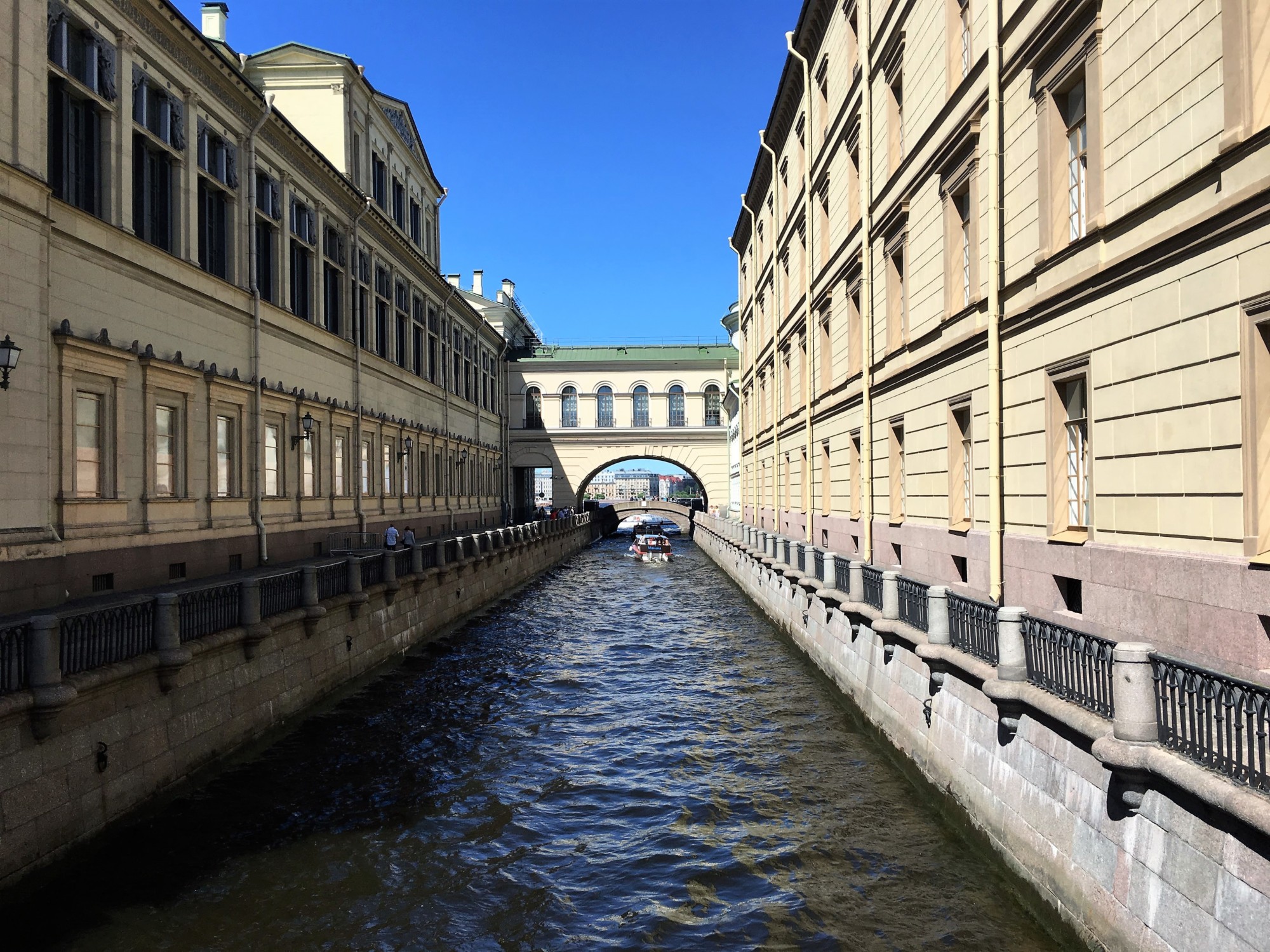
The General Staff Quarters
The Staff General Quarters, or “Stavka,” in St. Petersburg, Russia, is a historic building that played a crucial role in the country’s military and political history. Built in the late 18th century during the reign of Catherine the Great, this grand neoclassical structure was originally designed as a residence for the Tsarina’s closest advisors and military commanders. It served as the headquarters for the Russian Imperial Army and played a significant role during various military campaigns, including the Napoleonic Wars.
During World War I and the Russian Revolution, the Staff General Quarters continued to function as a strategic military command center. However, in the Soviet era, its purpose evolved. It became a museum dedicated to military history and was opened to the public, showcasing a vast collection of artifacts, weapons, and historical documents. Today, the building is officially known as the Central Museum of the Armed Forces of the Russian Federation. Visitors can explore its extensive exhibitions, which chronicle the military history of Russia from its early days to modern times. The Staff General Quarters stands as a testament to the country’s military heritage and serves as a valuable educational resource for understanding Russia’s role in shaping world events.
Open: 10.30AM – 6PM Tuesday to Sunday. Closed Monday
St Peter & Paul Fortress
St. Peter and Paul Fortress, situated on Hare Island along the Neva River in St. Petersburg, Russia, is a historic marvel with a multifaceted past. Established by Tsar Peter the Great in 1703, the fortress was initially constructed to protect the newly founded city of St. Petersburg from potential Swedish invasions during the Great Northern War. Its distinct star-shaped design, inspired by European military architecture of the time, made it a formidable stronghold. The centerpiece of the fortress is the Peter and Paul Cathedral, a striking golden-spired structure that served as the final resting place for many Russian emperors, including Peter the Great himself.
During the Bolshevik Revolution and the Russian Civil War, the Peter and Paul Fortress played a crucial role in the tumultuous events of the era. It served as a political prison where the Bolshevik government detained and interrogated political opponents, counter-revolutionaries, and perceived threats to the new regime. The fortress was at the center of the Red Terror, a campaign of political repression. However, as the years passed, its role as a prison diminished, and today, it has transformed into a historical and cultural complex. The fortress houses several museums, including the Museum of Space Exploration and the Museum of the History of St. Petersburg, making it a captivating destination for those interested in Russia’s history, culture, and architectural heritage. The Peter and Paul Fortress stands as a testament to the enduring spirit of St. Petersburg, a city that has witnessed centuries of change and evolution.
Open: 10AM – 4PM Thursday to Tuesday. Closed on Wednesday.
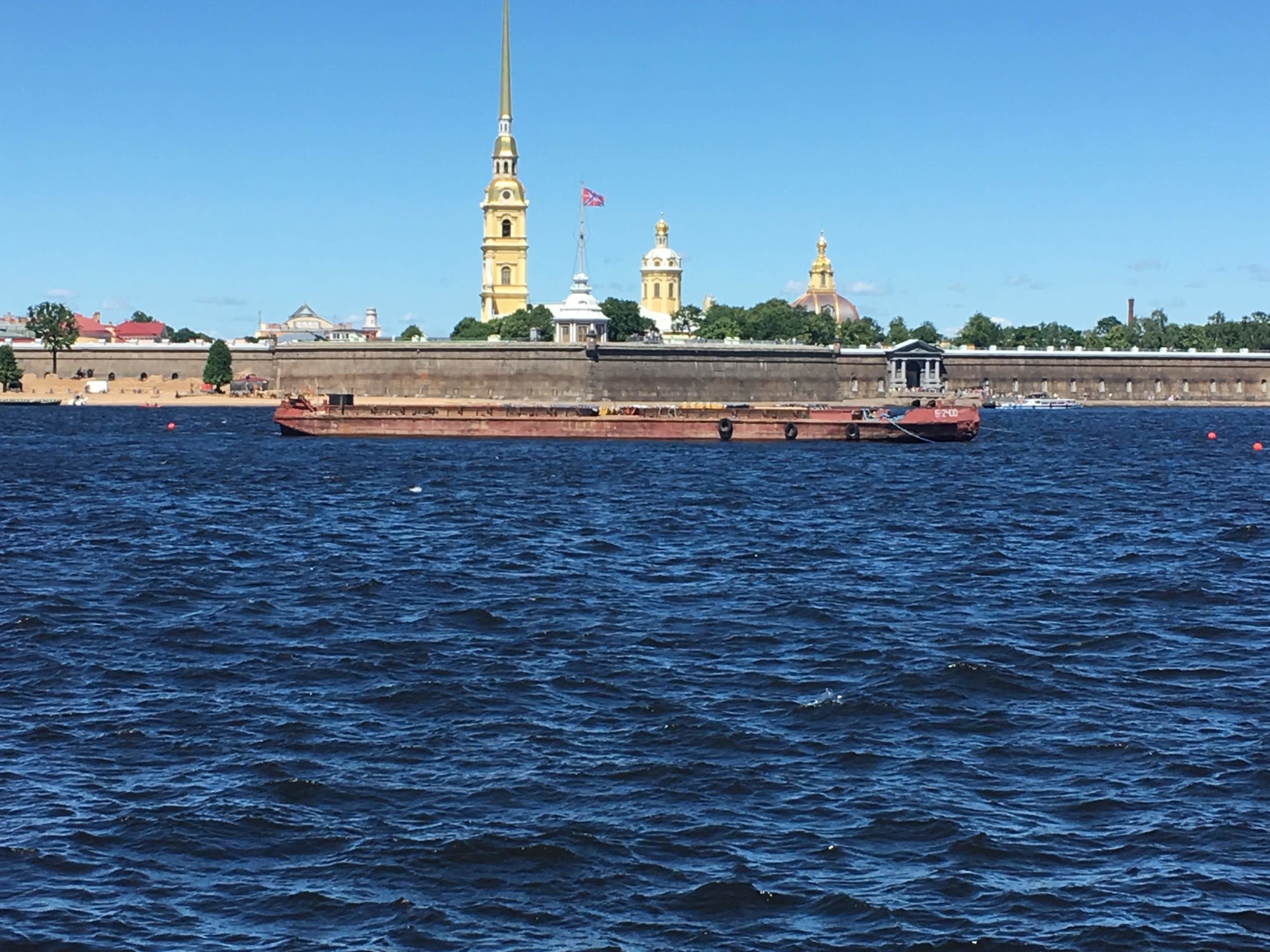
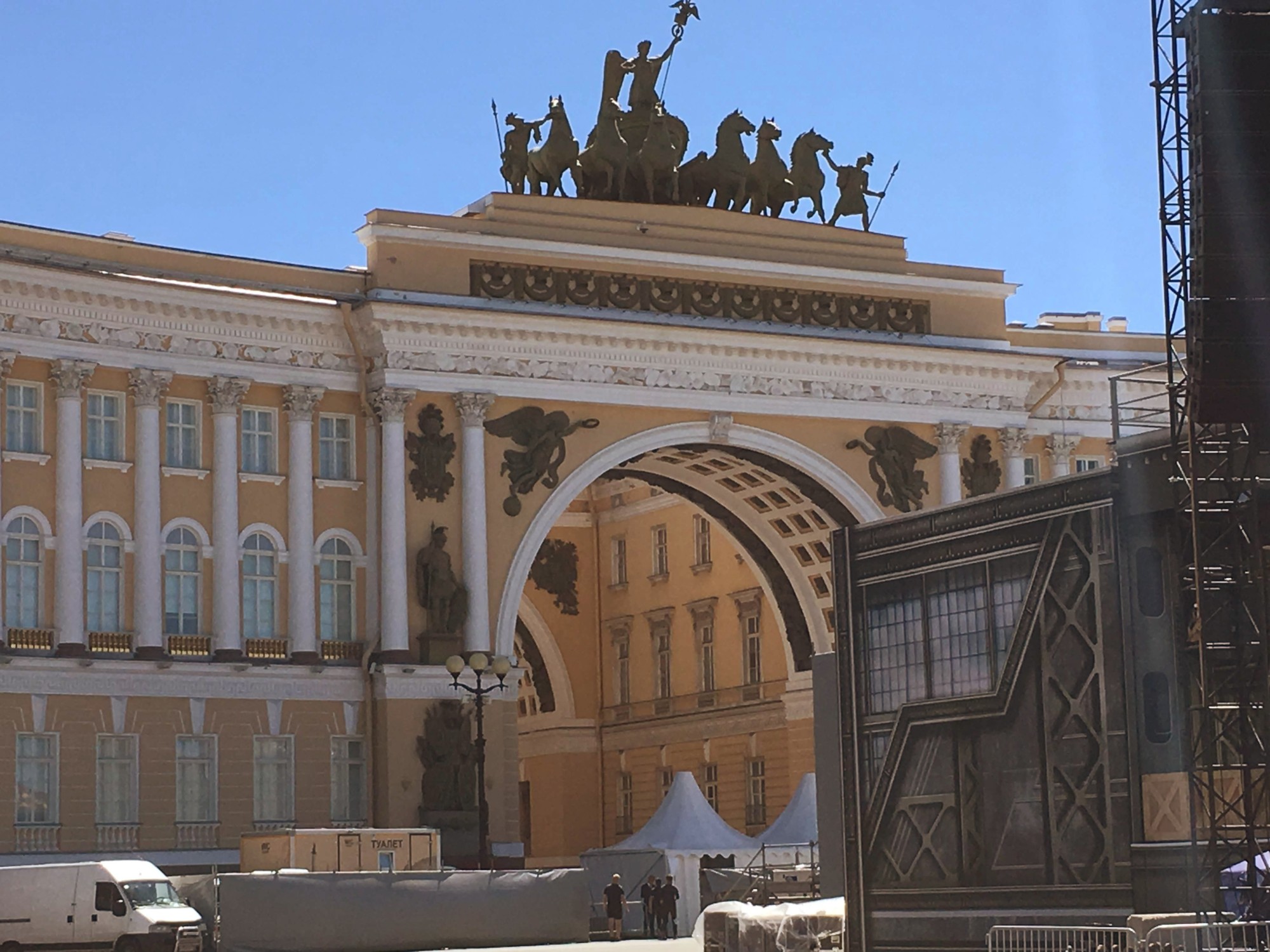
St Petersburg Palace Winter Gardens
The Winter Palace Gardens, located in the heart of St. Petersburg, Russia, are an enchanting and historic part of the city’s cultural heritage. These meticulously landscaped gardens have a history that dates back to the early 18th century when they were originally laid out as part of the grand ensemble of the Winter Palace, the official residence of Russian monarchs. The gardens, with their ornate fountains, statues, and manicured lawns, were designed in the Baroque style and served as a luxurious backdrop for the royal court’s extravagant gatherings and celebrations.
Over the centuries, the Winter Palace Gardens underwent numerous redesigns and renovations, reflecting the changing architectural tastes of the time. The gardens played a central role in the grandeur of St. Petersburg, especially during the era of the Russian Empire. Today, they are open to the public, providing a peaceful oasis in the bustling city center. Visitors can stroll through the gardens, admire the historic architecture, and enjoy the serene ambiance that offers a glimpse into the opulent past of St. Petersburg. The Winter Palace Gardens continue to be a living testament to the city’s rich history and enduring cultural significance.
Address: Palace Square, д. 2, St Petersburg
Open: 24 Hours
St Petersburg Summer Gardens
The Summer Gardens, one of the most iconic and historic green spaces in St. Petersburg, Russia, are a testament to the city’s commitment to art and culture. Established by Tsar Peter the Great in the early 18th century, these gardens were designed as a serene and elegant retreat from the bustling city. Their layout, influenced by the French and Dutch Baroque styles, features meticulously manicured flowerbeds, symmetrically arranged pathways, and numerous statues and fountains. The gardens also boast a magnificent palace, the Summer Palace, which served as a summer residence for the Russian imperial family.
The Summer Gardens are located on the embankment of the Neva River and are easily accessible from the city center. The address of the Summer Gardens is Summer Garden Embankment, St. Petersburg, Russia, 190000. Over the centuries, the gardens have undergone various transformations, including restoration efforts following damage during World War II. Today, they remain a cherished destination for both locals and tourists, offering a tranquil escape where visitors can appreciate the timeless beauty of Russian landscape design and enjoy a peaceful respite amidst the city’s vibrant atmosphere.
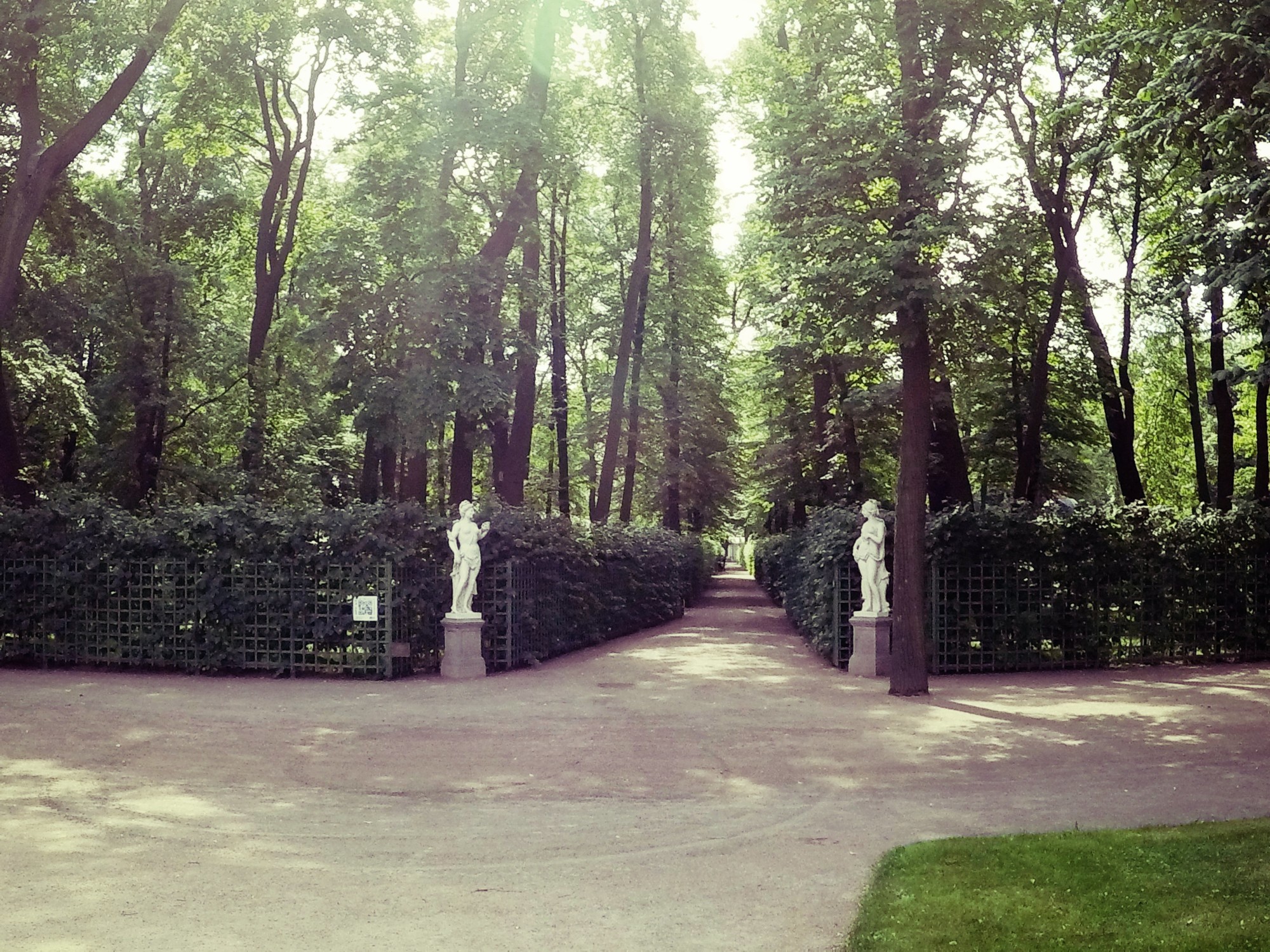
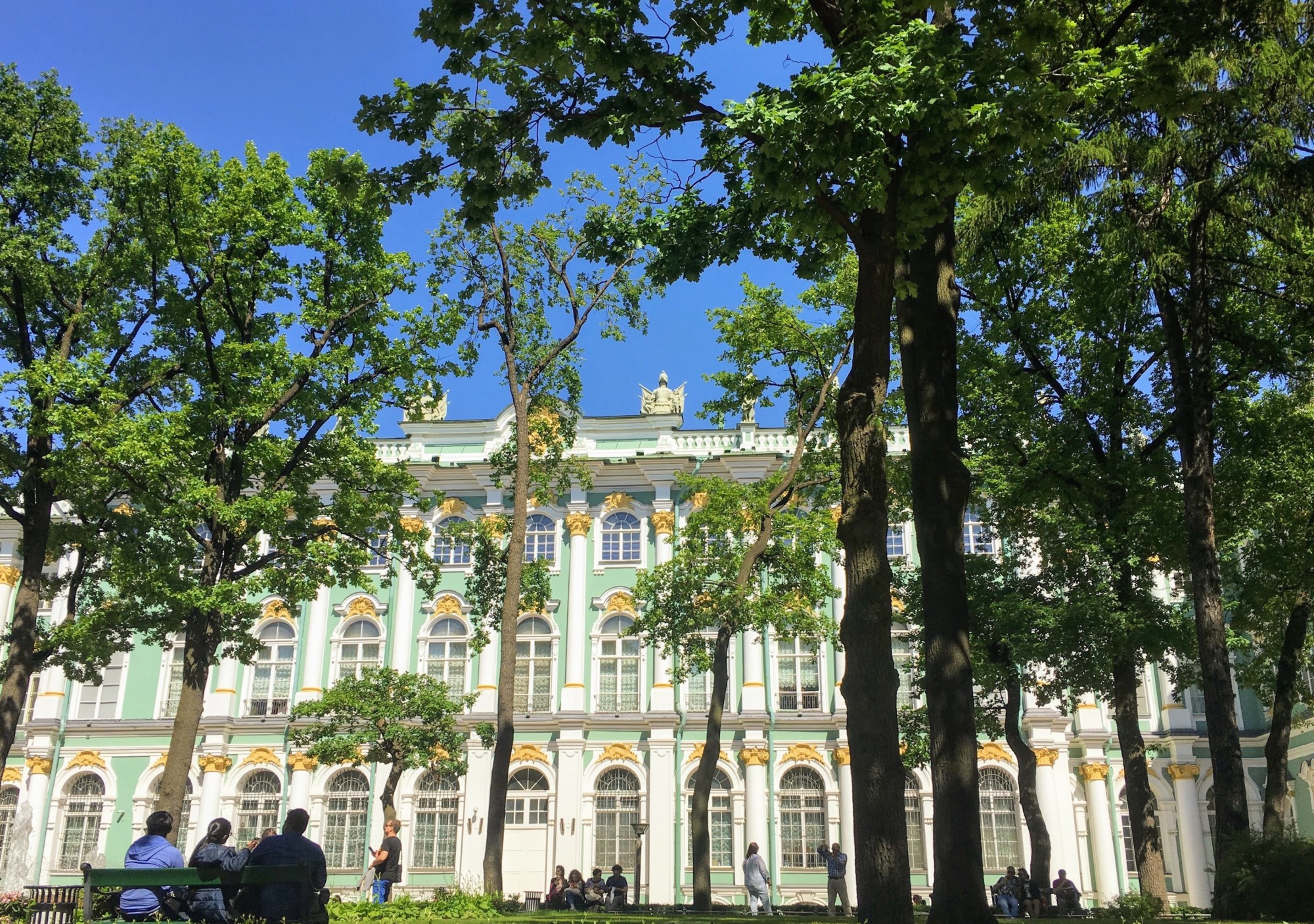
The Church of the Savior on Spilled Blood
The Church of the Savior on Spilled Blood, located in the heart of St. Petersburg, Russia, is an architectural marvel and a testament to the country’s rich history. This stunning church, also known as the Church of the Resurrection of Jesus Christ, was built in the late 19th century on the site where Emperor Alexander II was assassinated in 1881. The church’s design is a remarkable blend of various architectural styles, primarily influenced by Russian Revivalism and medieval Russian architecture. Its exterior is adorned with colorful onion domes, intricate mosaics, and ornate details, making it one of the most visually striking landmarks in the city. The interior of the church is equally breathtaking, featuring a lavish display of mosaic artwork that covers nearly every inch of its walls and ceilings, depicting biblical scenes and stories in a vibrant and intricate fashion.
Visiting the Church of the Savior on Spilled Blood is like stepping into a time capsule of Russia’s artistic and religious heritage. The church was painstakingly restored after years of neglect and damage during the Soviet era, and today, it stands as a symbol of Russia’s dedication to preserving its cultural treasures. Beyond its historical significance, the church’s serene location along the Griboedov Canal and its proximity to iconic landmarks like the Hermitage Museum and the Winter Palace make it a must-visit destination for anyone exploring the rich cultural tapestry of St. Petersburg. Whether you’re an art enthusiast, a history buff, or simply a traveler in search of beauty and inspiration, the Church of the Savior on Spilled Blood is sure to leave an indelible impression.
Address: Griboyedov channel embankment, 2Б, St Petersburg, Russia, 191186
Hours: 10.30Am – 6PM Thursday – Tuesday, closed on Wednesday.
Winter Palace of Peter I
Beneath the Hermitage excavations have revealed remains of the palace of Peter the Great. This includes a formal state courtyard and several suites of rooms, some of which have been restored to show what they would have looked like during the times of Peter the Great. Its a bit of fun and we were the only ones there when we visited
Address: Dvortsovaya nab 32 (Its an obscure small door easy to miss)
Open: 10.30am-5pm Tue-Sat, 10am-4pm Sunday
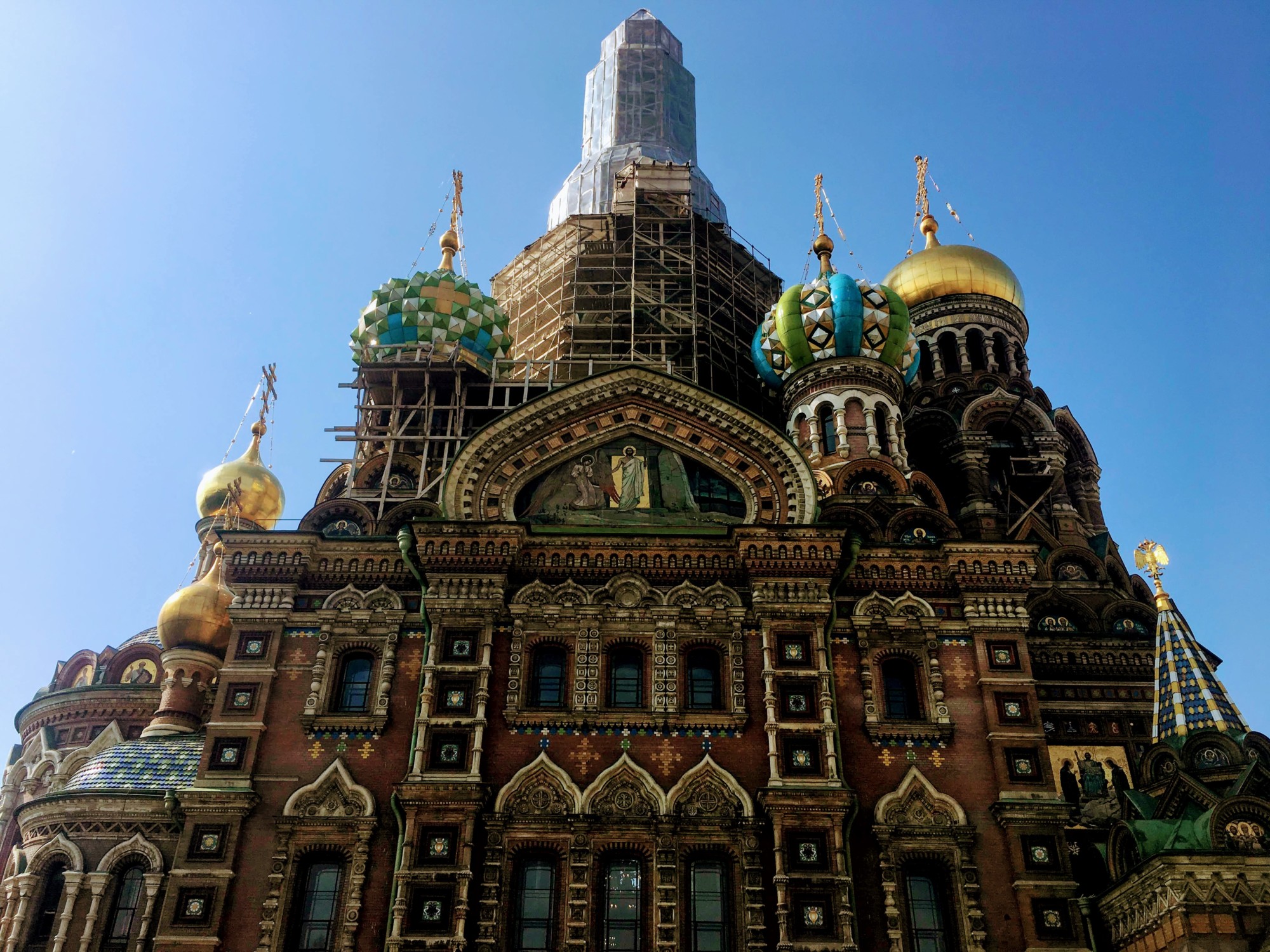
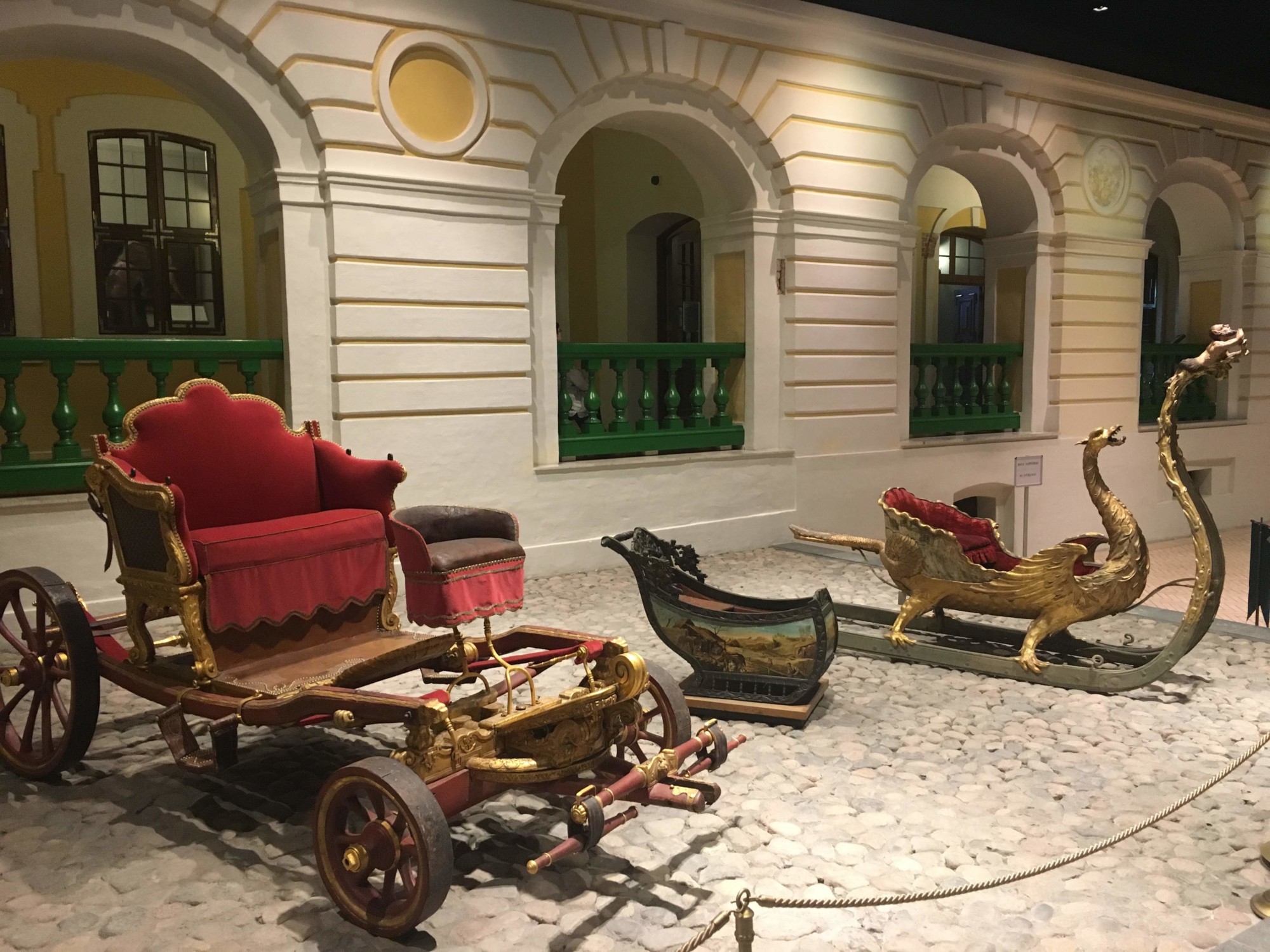
Summer Palace of St Petersburg
The Summer Palace of St. Petersburg, also known as the Peterhof Palace, is a stunning testament to the extravagance and grandeur of the Russian imperial court. Commissioned by Peter the Great in the early 18th century, this palace complex is often referred to as the “Russian Versailles” due to its remarkable resemblance to the Palace of Versailles in France. Situated on the shores of the Gulf of Finland, the Peterhof Palace is famous for its magnificent gardens, numerous fountains, and opulent interiors. The palace was designed by several renowned architects, including Bartolomeo Rastrelli, and its architectural style reflects a combination of Baroque and Neoclassical influences.
One of the most striking features of the Summer Palace is its intricate system of fountains and cascades that adorn the palace’s terraced gardens. The Grand Cascade, in particular, is a masterpiece of engineering and aesthetics, featuring numerous gilded statues, sculptures, and water jets. The palace’s interiors are equally sumptuous, with lavishly decorated rooms and halls that offer a glimpse into the lavish lifestyle of the Russian royalty. Visiting the Summer Palace is not only an opportunity to admire its architectural and artistic treasures but also to enjoy the picturesque landscape of its gardens, making it a must-visit destination for tourists exploring St. Petersburg’s rich cultural heritage.
How To Get To The Summer Palace of St Petersburg
To get to the Summer Palace, also known as the Peterhof Palace, in St. Petersburg, Russia, you can follow these steps:
Starting Point: First, you’ll need to determine your starting point within St. Petersburg, as the transportation options may vary depending on where you are located in the city.
Metro: St. Petersburg has an efficient metro system, and you can use it to get to the Peterhof Palace. Take the metro to the “Avtovo” station (Line 1, Red Line). From there, you can catch a minibus (known as a marshrutka) or a regular bus to Peterhof. The bus journey takes about an hour.
Hydrofoil: Another popular and scenic way to reach the Peterhof Palace is by taking a hydrofoil boat from St. Petersburg. The hydrofoil departs from the piers near the Hermitage Museum and the Winter Palace. This option offers a picturesque ride along the Neva River and the Gulf of Finland and is often preferred by tourists.
Taxi or Private Transportation: If you prefer more convenience and a direct route, you can also take a taxi or arrange for private transportation to the Peterhof Palace. This option is faster but can be more expensive than public transportation.Before heading to the Summer Palace, it’s a good idea to check the operating hours, ticket prices, and any special events or closures that may affect your visit, especially during the peak tourist season. Once you arrive at the palace complex, you can explore the beautiful gardens, fountains, and the palace itself at your leisure.
Explore The Streets Of St Petersburg
Exploring the streets of St. Petersburg, Russia, is like embarking on a journey through a living museum of history, culture, and architectural splendor. The city’s streets are lined with an extraordinary array of architectural styles, from the grand Baroque and Neoclassical facades of the imperial era to the charming pastel-colored buildings of the 19th century. One of the most iconic streets in St. Petersburg is Nevsky Prospect, a bustling thoroughfare that runs through the heart of the city. Along Nevsky Prospect, you’ll find a captivating mix of shops, cafes, theaters, and historic landmarks, including the Kazan Cathedral and the Church of the Savior on Spilled Blood. As you wander through the city’s streets, you’ll also encounter picturesque canals and bridges, earning St. Petersburg its nickname as the “Venice of the North.”
Beyond the architectural marvels, exploring the streets of St. Petersburg offers a glimpse into the daily life and vibrant cultural scene of the city. You can savor the flavors of Russian cuisine in cozy cafes, browse eclectic boutiques for unique souvenirs, and witness street performers showcasing their talents. The city comes alive during the White Nights of summer when the sun barely sets, creating a magical ambiance that encourages long evening strolls along the banks of the Neva River. Whether you’re captivated by the history, the arts, or the everyday experiences of the people, meandering through the streets of St. Petersburg is a sensory adventure that immerses you in the rich tapestry of Russian culture and heritage.
